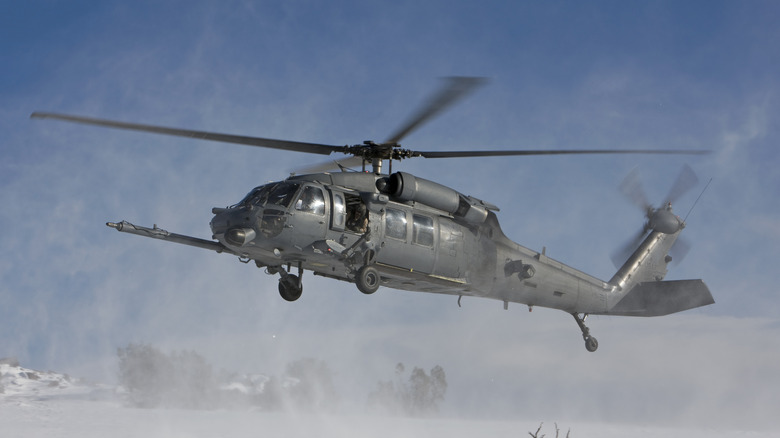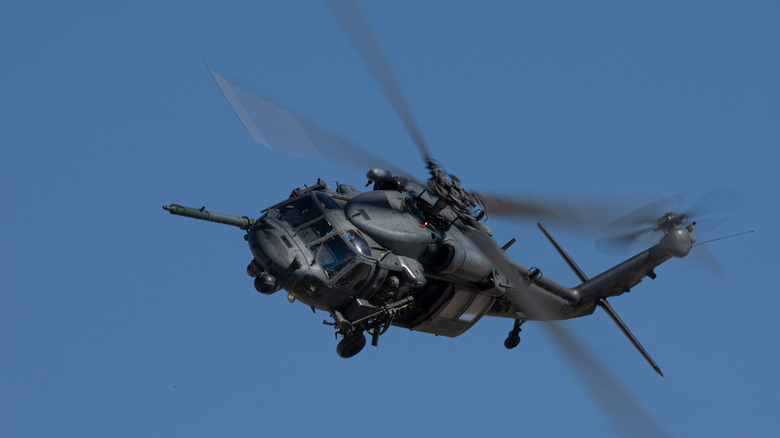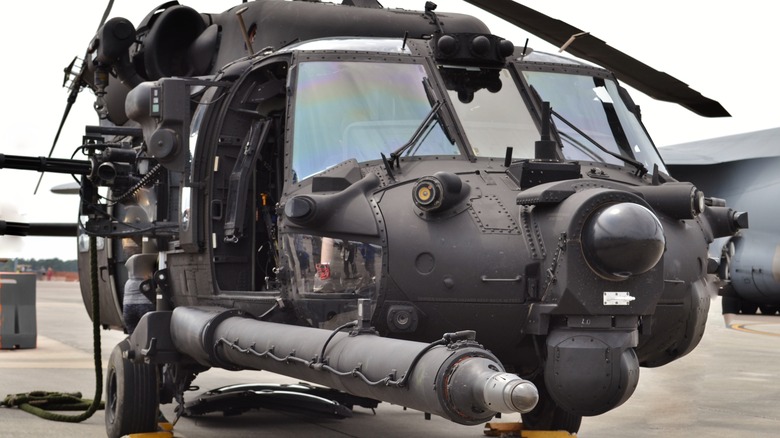Why Do Some Military Helicopters Have A Pole On The Front?
Helicopters have long remained some of the most versatile, reliable, and equally capable pieces of equipment in the military. Everything about these aircraft is designed to enhance their effectiveness in the field, from vertical take-off and landing capabilities, enabling better adaptability to environments compared to other aircraft, to their ability to hover. There are also the onboard weapons that make them a force to be reckoned with.
Certain helicopters like the AH-65 Apache and Bell AH-1Z Viper can use air-to-air missiles and rockets while others are armed with miniguns. Some equip grenade launchers, such as the Bell AH-1 Cobra, regarded as the U.S. Military's oldest attack helicopter. While military helicopters are truly impressive, they are also among the most complex vehicles in the military.
They sometimes feature advanced systems that most people may not be able to explain. One such system is the unusual pole that typically protrudes from the front of these aircraft. The pole in question is a refueling probe that enables the helicopter to top off its fuel from a tanker without landing.
Aerial refueling demands precision and skill
Air-to-air refueling is and advantageous feature for aircraft, as it can extend its range and mission duration without returning to base. The process is as mesmerizing as it is complex, demanding a high level of skill. An aerial refueling tanker, such as the incredible 60-plus-year-old Boeing KC-135 Stratotanker or KC-30A Multi-Role Tanker Transport (MRTT), flies to a specific position at a precise time, where the aircraft in need of refueling will meet it.
Once the two aircraft are close enough, typically 65.61 feet apart, the tanker aircraft will deploy an 82.02-foot-long fuel hose that features a refueling drogue at its end. The receiving aircraft, in this instance the military helicopter, will attach its probe (the front pole) to the hose, establishing a connection that enables refueling.
Given the amount of work needed to execute this type of refueling, planning and precision are the key to success. Military tankers typically carry 150,000 pounds of fuel, while others, like the KC-30A (MRTT), can transport over 220,000-pounds of fuel. These crafts, the cargo they carry, and the aircraft they refuel are expensive, to say the least, which makes keeping them out of harm's way crucial. A mistake while refueling can result in terrible losses.
Risks involved in aerial refueling
The first U.S. military helicopter to participate in air-to-air refueling was the HH-3E, which underwent its first operational test in Southeast Asia with a modified C-130 Hercules in 1967. Since then, many military helicopters have been equipped with the probes to facilitate this refueling process. However, some have met terrible fates due to the risks involved. One of the more recent cases took place in November 2023, as reported by NBC News.
This particular heartbreaking incident cut a training exercise short after an MH-60 Black Hawk helicopter crashed during midair refueling. The accident claimed the lives of five service members, serving as a reminder that, despite how breathtaking air-to-air refueling may appear, it is also dangerous and must be approached with the utmost care.
While the cause of the crash was stated as an in-flight emergency by the Department of Defense, several other risks can also lead to similar, if not worse, disasters. These range from fuel vapors igniting during or after refueling due to sparks or static electricity, which can potentially lead to explosions, to the loss of helicopter control, particularly in turbulent weather, resulting in crashes.


